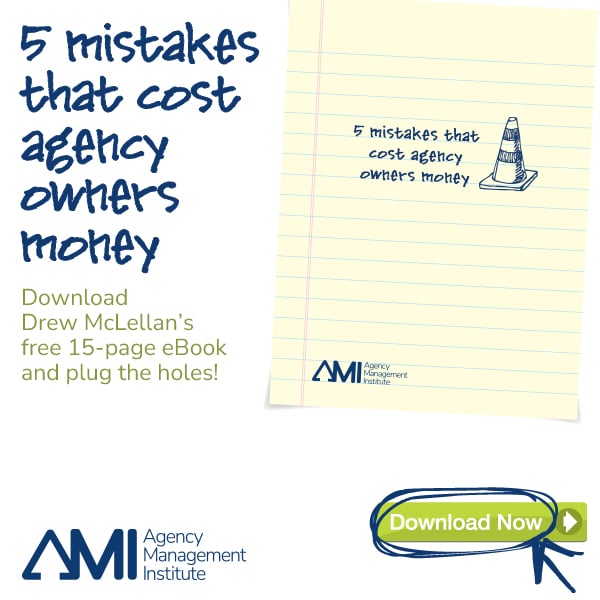New business isn’t something most agencies worry about — until it’s too late. Unfortunately, “too late” is often the moment after you’ve lost your biggest client. Every agency owner dreads this moment.
After receiving the call, he rallies the leadership team to bring in some money, and the creatives get to work sending out some direct-mail pieces. Meanwhile, the agency owner pours himself a drink and sits down to put together a list of who will be laid off if the agency can’t drum up some revenue. It’s a bleak cycle that only ends after the agency either lands a new account or suffers a round of layoffs.
One reason many agencies struggle with new business is that the process often depends on just one person. If that person gets busy or distracted, new business efforts come to a grinding halt.
Other times, it fails because the agency owner doesn’t enjoy the process or he’s too caught up in his day-to-day responsibilities. But most of the time, it’s because it’s inefficient and takes too long to engage in every day. When it’s not a priority, it only happens when work is slow or when a big client suddenly ends a relationship. And when the worst does happen, it triggers a temporary flurry of new business activity.
As writer Rae Ann Fera put it, “Long lead times, long pitch lists, layers of consensus needed to select a partner, layers of meaningless paperwork for RFPs, requests for spec work, lack of access to decision makers…when it’s bad, it’s pretty terrible.”
If and when the agency manages to replenish its roster, it gets busy very quickly, and new business falls by the wayside once again.
Instead of a last-minute scramble, new business should be a thoughtful, streamlined, and continual process. Today, clients are fragmenting their business between agencies with different expertise, which means agencies need to land more clients to make the same income. They need a full pipeline of possibilities, and the best way to do this is to concentrate new business efforts on three kinds of leads: strangers, acquaintances, and elites.
Strangers
These are exactly what they sound like: people who don’t know you. Most of your agency’s new business program should be aimed at this group. Most people find new agencies by asking around or searching online, but your website isn’t enough to get found. Write for trade publications, attend conferences, reach out on LinkedIn, or publish a book. These are all excellent ways to get noticed for being smart.
Acquaintances
These are potential clients who know who you are. Maybe they’re old clients or people you pitched to in the past. Keep finding opportunities to connect, and when you reach out, make sure you’re offering something useful.
Elites
This cohort should comprise the smallest part of your new business program. These are the potential clients you’d love to see on your roster — the ones who would be so perfect for your organization that you’ll pursue them until they either tell you to go away or hire you. Ideally, these organizations should fall into your areas of expertise, but you’re going to have to be memorable and persistent to win their business.
If agencies followed even half of their own advice, they wouldn’t have to engage in a mad dash to find new clients. A healthy new business strategy includes both offline and digital tactics, stays true to the brand, and focuses on telling the target audience about the things the agency does really well.
But the most crucial aspect of any new business strategy is consistency. It requires investing a little time and brainpower into bringing in new clients every day so that when a client does leave, the agency has an entire pipeline of prospects waiting
This article was written by Drew McLellan for Digiday.




